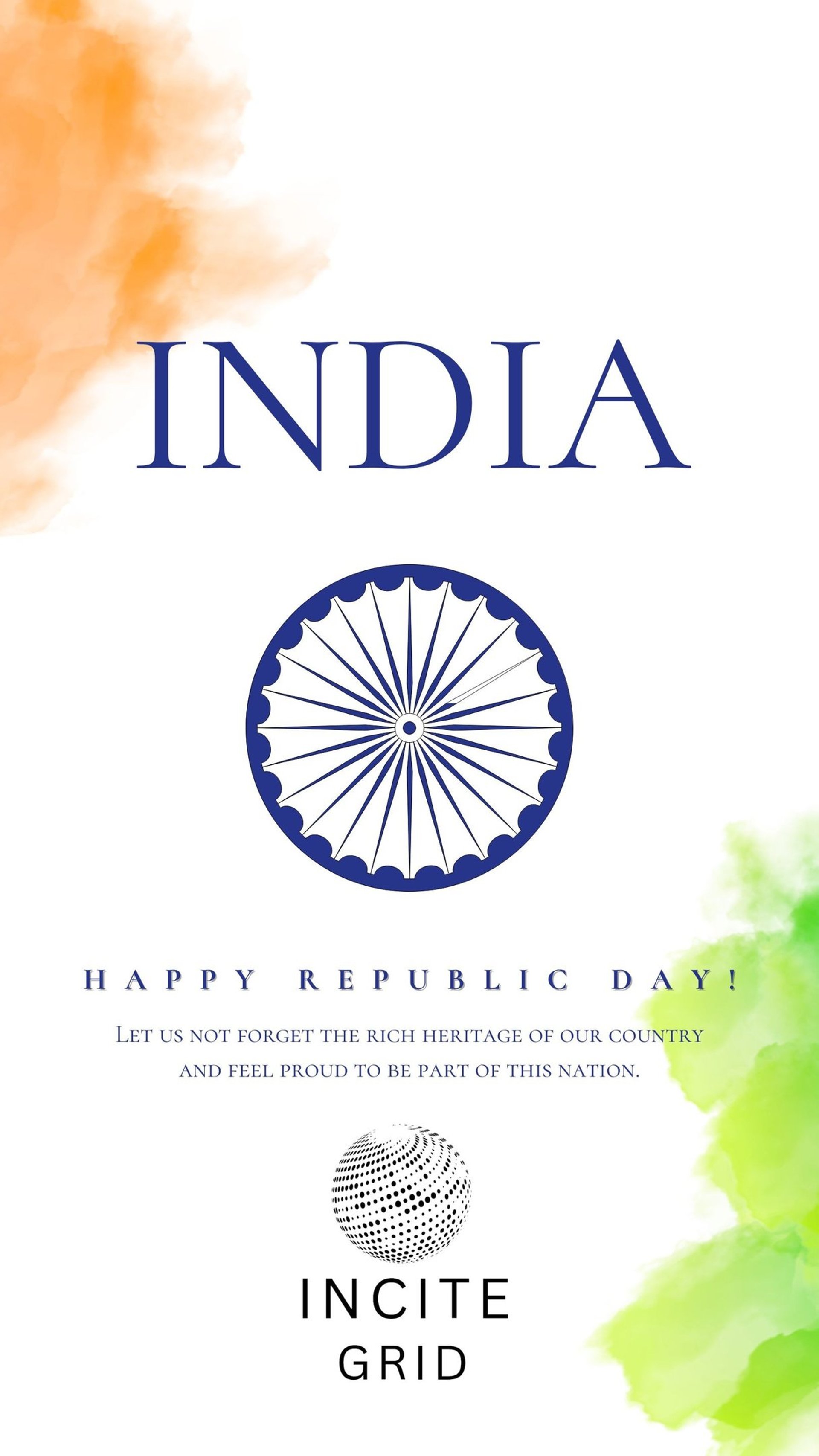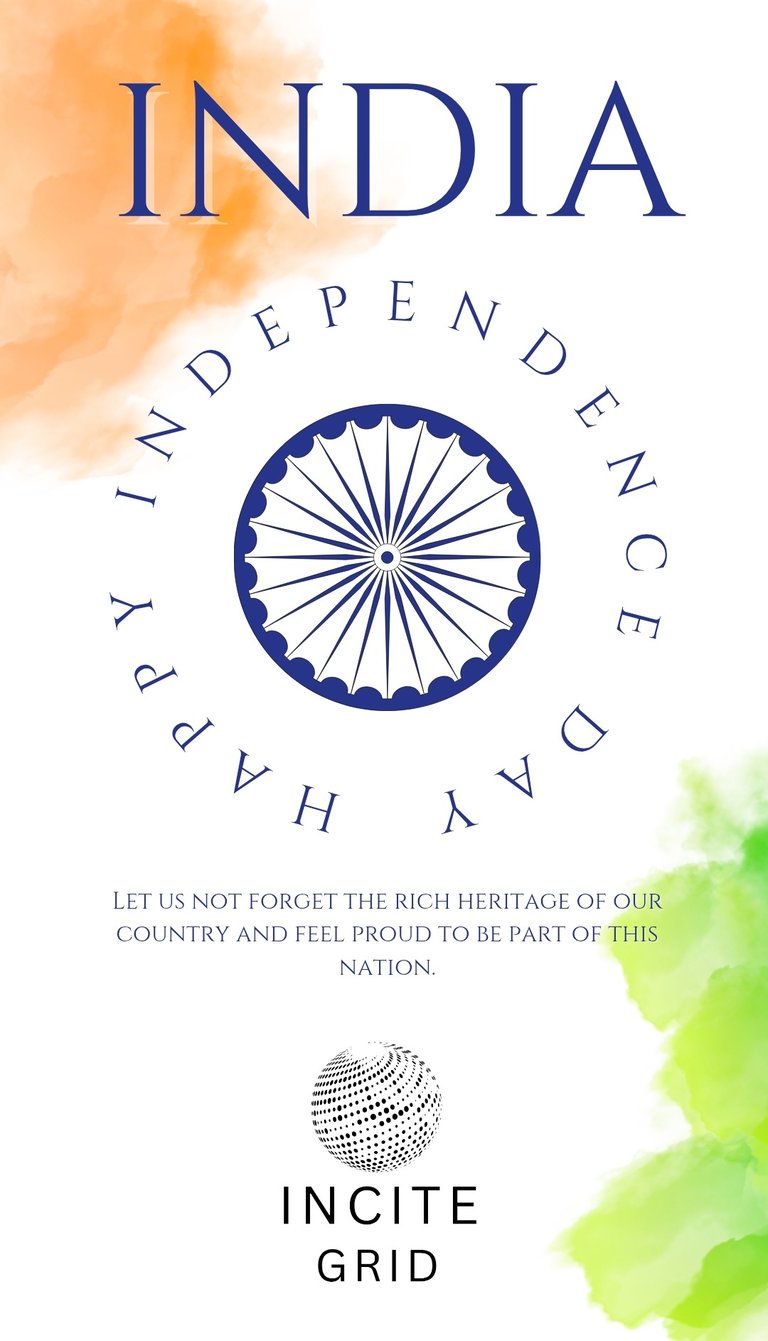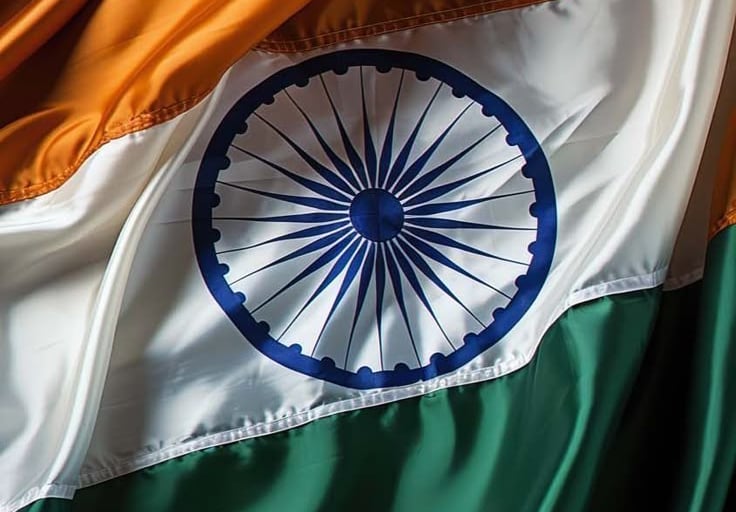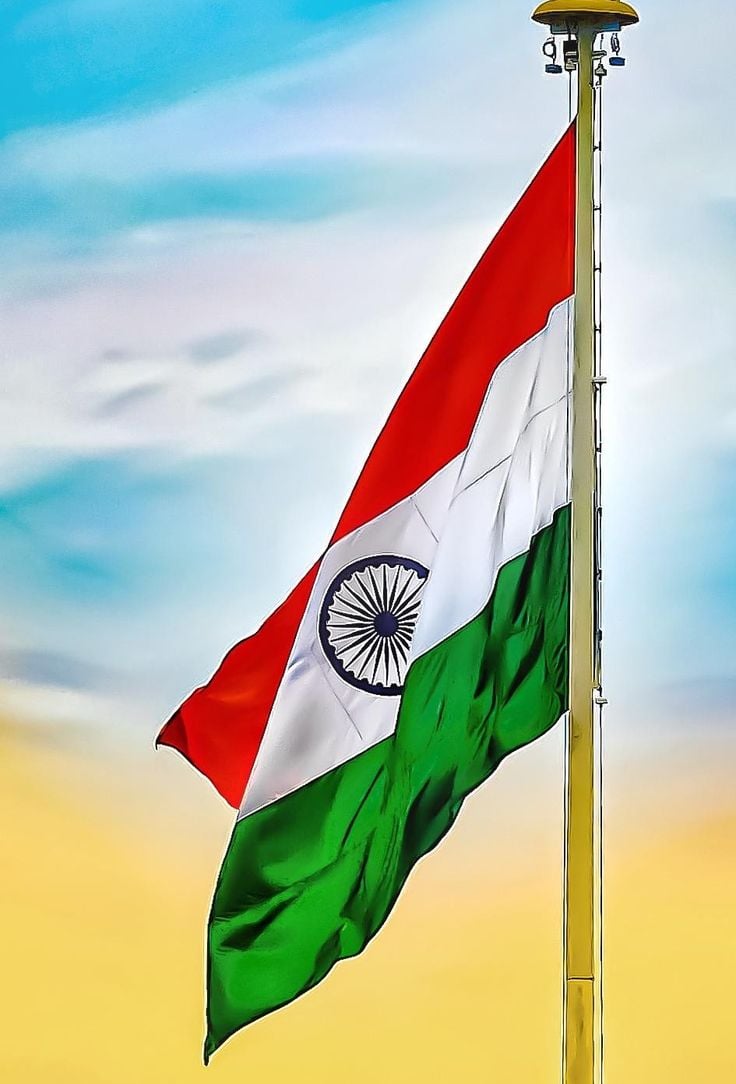
August 15th: India's Independence Day

INCITEGRID










August 15th: India's Independence Day - A Celebration of Freedom and Unity
Every year on August 15th, over 1.4 billion Indians across the world unite in celebration of one of the most monumental days in their nation's history - Independence Day. This date marks the pivotal moment in 1947 when India finally broke free from nearly 200 years of British colonial rule, transforming from a colonized territory into a sovereign nation and reclaiming its fundamental right to self-governance.
The significance of this day extends far beyond mere historical remembrance. It represents the triumph of the human spirit over oppression, the victory of non-violent resistance over brute force, and the power of unity in diversity. For millions of Indians, August 15th is not just a national holiday - it's a sacred reminder of the price of freedom and the responsibility that comes with it.
The Historic Night: August 14-15, 1947
The choice of August 15th as India's Independence Day has its own fascinating backstory. Lord Mountbatten, the last Viceroy of India and the man tasked with overseeing the transfer of power, personally selected this date because it marked the second anniversary of Japan's surrender in World War II - a day he considered particularly auspicious from his military perspective.
As the clock struck midnight on August 14-15, 1947, history was being written in golden letters. In the Central Hall of the Constituent Assembly in New Delhi, India's first Prime Minister Jawaharlal Nehru rose to deliver what would become one of the most iconic speeches in world history - the "Tryst with Destiny" speech. His words, "At the stroke of the midnight hour, when the world sleeps, India will awake to life and freedom," continue to send shivers down the spine of every patriotic Indian even today.
The atmosphere in the assembly hall was electric with emotion. Grown men wept openly, women ululated with joy, and the entire nation collectively held its breath as the dream of centuries finally materialized into reality. The Indian tricolor was unfurled, replacing the Union Jack, and with it, a new chapter in human civilization began.
{1}The Arduous Path to Freedom: Centuries of Struggle and Sacrifice
India's journey to independence was neither quick nor easy. It was paved with the blood, sweat, and tears of countless freedom fighters who sacrificed everything - their lives, families, comfort, and future - for the dream of a free India. This struggle spanned multiple generations and took various forms, from peaceful protests to armed rebellion, from intellectual discourse to mass movements.
1.The Early Seeds of Resistance (1857-1885)
The first major uprising against British rule came in 1857, often called the First War of Independence or the Sepoy Mutiny. Leaders like Rani Lakshmibai of Jhansi, Tatya Tope, Bahadur Shah Zafar, and Mangal Pandey showed extraordinary courage in challenging the mighty British Empire. Though the revolt was ultimately suppressed, it planted the seeds of resistance that would eventually grow into a nationwide movement.
The establishment of the Indian National Congress in 1885 marked the beginning of organized political resistance. Early leaders like Dadabhai Naoroji, known as the "Grand Old Man of India," began articulating the economic exploitation of India by the British through his famous "Drain Theory."
2.The Revolutionary Phase (1905-1920)
The partition of Bengal in 1905 awakened a new wave of nationalism. The Swadeshi movement encouraged Indians to boycott British goods and promote indigenous products. Revolutionary groups emerged across the country, with leaders like Bal Gangadhar Tilak declaring, "Swaraj is my birthright, and I shall have it!"
This period saw the emergence of revolutionary heroes like Khudiram Bose, who was hanged at the young age of 18, and the formation of secret societies dedicated to overthrowing British rule through armed resistance. The Komagata Maru incident and the Jallianwala Bagh massacre of 1919 further intensified anti-British sentiment.
3.The Gandhian Era (1920-1947)
The arrival of Mahatma Gandhi transformed the freedom struggle completely. His philosophy of Satyagraha (non-violent resistance) gave the movement a moral dimension that resonated with people across all sections of society. Gandhi's major movements included:
The Non-Cooperation Movement (1920-1922): This movement saw unprecedented participation from all sections of society. Students left government schools, lawyers gave up their practices, and people began boycotting British goods on a massive scale.
The Salt March (1930): Perhaps the most iconic act of civil disobedience in human history, Gandhi's 240-mile march to Dandi to make salt challenged the British monopoly and sparked nationwide protests. The image of the frail Gandhi picking up a handful of salt became a symbol of resistance worldwide.
The Quit India Movement (1942): Launched with the slogan "Do or Die," this movement saw the most widespread participation in the freedom struggle. Despite mass arrests of leaders, the people continued their resistance with extraordinary determination.
4.Other Streams of the Freedom Movement
Subhas Chandra Bose and the INA: Netaji Subhas Chandra Bose's approach differed from Gandhi's. He believed that armed resistance was necessary to drive out the British. His formation of the Indian National Army (INA) with the help of Japan and the slogan "Give me blood, and I shall give you freedom" inspired millions.
The Martyrs: The sacrifice of young revolutionaries like Bhagat Singh, Rajguru, Sukhdev, Ashfaqullah Khan, Ramprasad Bismil, and Chandrashekhar Azad created a legend that continues to inspire generations. Their fearlessness in the face of death showed that the spirit of freedom could not be crushed.
Women Freedom Fighters: The freedom struggle saw remarkable participation from women. Leaders like Sarojini Naidu, Kamala Nehru, Aruna Asaf Ali, Sucheta Kriplani, and Vijaya Lakshmi Pandit played crucial roles. Captain Lakshmi of the INA led the women's regiment, proving that the fight for freedom knew no gender boundaries.
Regional Heroes: Every region of India produced its own heroes - Velu Nachiyar in Tamil Nadu, Kittur Chennamma in Karnataka, Birsa Munda in Jharkhand, and countless others who fought British rule in their own territories.
{2}Independence Day Celebrations: A Nation Comes Together
1.The Grand Celebration at Red Fort, Delhi
The epicenter of Independence Day celebrations is the majestic Red Fort in Delhi, where the Prime Minister of India hoists the national flag and addresses the nation. This ceremony, broadcast live across the country and around the world, is watched by hundreds of millions of people.
The day begins early with security preparations and the arrival of dignitaries. The Prime Minister's convoy makes its way through the historic streets of Old Delhi to the Red Fort, the same fort from where the Mughal emperors once ruled and where the last Mughal emperor Bahadur Shah Zafar was tried by the British.
The flag-hoisting ceremony is followed by the Prime Minister's address to the nation, traditionally delivered from the ramparts of the Red Fort. This speech, lasting about 90 minutes, covers the nation's achievements in the past year, acknowledges challenges, and outlines the vision for the future. It's a moment when the entire nation listens to its leader's thoughts on progress, development, and the path ahead.
The ceremony concludes with a spectacular display by the Indian Armed Forces, including a march past by various regiments, display of military hardware, and performances by military bands. The sight of the tricolor fluttering against the backdrop of the ancient red sandstone fort is a image that stirs the heart of every Indian.
2.State and Local Celebrations
Across India's 28 states and 8 union territories, similar flag-hoisting ceremonies take place at state capitals, district headquarters, and local government offices. Chief Ministers, Governors, District Collectors, and other officials participate in these ceremonies, ensuring that the celebration reaches every corner of the country.
In State Capitals: Governor's addresses, cultural programs showcasing regional heritage, and participation by local artists and performers make each state celebration unique while maintaining the national spirit.
In Districts and Villages: Even the remotest villages in India participate in Independence Day celebrations. Local panchayat leaders, teachers, and community elders ensure that the tricolor is hoisted and the significance of the day is explained to children and adults alike.
3.Educational Institutions: Nurturing Young Patriots
Schools and colleges across India become centers of patriotic fervor on Independence Day. The day typically begins with flag-hoisting ceremonies where students, teachers, and parents gather to sing the national anthem and listen to speeches about the importance of freedom and national unity.
School Programs Include:
- Cultural Performances: Students perform patriotic songs, classical and folk dances representing different states, and dramatic presentations depicting scenes from the freedom struggle
- Speech Competitions: Students deliver speeches on topics like "What Independence Means to Me," "My Favorite Freedom Fighter," and "India of My Dreams"
- Art and Craft Activities: Flag-making competitions, patriotic poster-making, and rangoli competitions with national themes
- Quiz Competitions: Testing students' knowledge about Indian history, geography, freedom fighters, and national symbols
- Fancy Dress Competitions: Children dress up as freedom fighters, national leaders, and represent different states of India
College Celebrations: Higher education institutions organize more sophisticated programs including debates on contemporary issues, cultural festivals showcasing India's diversity, and community service activities.
4.Workplace Celebrations
Corporate offices, government departments, and business establishments across India participate in Independence Day celebrations. Many organizations organize flag-hoisting ceremonies, distribute sweets among employees, and conduct team-building activities with patriotic themes.
Corporate Social Responsibility: Many companies use Independence Day as an opportunity to launch or highlight their CSR initiatives, particularly those focused on education, healthcare, and rural development.
{3}The Tricolor: Our National Pride
The Indian national flag, known as the Tiranga (tricolor), is one of the most beautiful and meaningful flags in the world. Designed by Pingali Venkayya, a freedom fighter from Andhra Pradesh, the flag carries profound symbolism that reflects India's values and aspirations.
1.The Three Colors and Their Deep Meaning
Saffron (Kesari): The topmost band represents courage, sacrifice, and the spirit of renunciation. It symbolizes the courage of our freedom fighters who gave up everything for the nation. In Indian philosophy, saffron also represents the spiritual dimension of life and the pursuit of truth.
White: The middle band represents truth, peace, and purity. It signifies the path of dharma (righteousness) that India seeks to follow in its interactions with the world. White also represents the diversity of India - how different colors merge into white light, so do different communities merge into one nation.
Green: The bottom band represents faith, fertility, prosperity, and the verdant nature of India. It symbolizes the agricultural richness of the country and the hope for a prosperous future. Green also represents the youthful energy of the nation and its commitment to environmental conservation.
2.The Ashoka Chakra: Wheel of Dharma
At the center of the white band lies the Ashoka Chakra, a navy blue wheel with 24 spokes. This wheel is taken from the Lion Capital of Ashoka at Sarnath, representing the eternal wheel of dharma (righteousness). Each of the 24 spokes represents one hour of the day, symbolizing that there is life in movement and death in stagnation.
The Ashoka Chakra also represents the Buddhist concept of the wheel of law, indicating that India's approach to governance and international relations is based on moral and ethical principles rather than mere power politics.
3.Flag Etiquette and Respect
The Indian Flag Code specifies how the national flag should be displayed, handled, and treated. Some important guidelines include:
- The flag should never touch the ground
- It should be displayed from sunrise to sunset
- When displayed with other flags, the Indian flag should be in a position
of honor
- The flag should never be used for commercial purposes or as clothing
- It should be made only of hand-spun and hand-woven cloth (khadi)
4. Independence Day's Profound Impact on All Indians
{4}Cultural Unity in Spectacular Diversity
India is perhaps the most diverse country in the world, with over 1,600 languages, multiple religions, varied climatic conditions, different food habits, and distinct cultural traditions. Yet, Independence Day serves as a powerful unifying force that brings all Indians together under the umbrella of shared nationalism.
1.Linguistic Diversity: From Tamil in the south to Kashmiri in the north, from Bengali in the east to Gujarati in the west, Indians speak in hundreds of different tongues. But on August 15th, the entire nation sings "Jana Gana Mana" in unison, transcending linguistic barriers.
2.Religious Harmony: India is home to Hindus, Muslims, Christians, Sikhs, Buddhists, Jains, Parsis, and many other religious communities. Independence Day celebrations see people of all faiths coming together, with minority communities often taking leading roles in organizing celebrations, demonstrating the secular character of Indian nationalism.
3.Regional Pride within National Unity: Each state celebrates Independence Day by showcasing its unique cultural heritage while maintaining the overarching theme of national unity. A classical Bharatanatyam performance in Tamil Nadu, a Bhangra dance in Punjab, and a Bihu dance in Assam all become expressions of the same patriotic spirit.
4.Emotional and Psychological Impact:
Collective Memory: Independence Day serves as a day of collective remembrance when the entire nation pauses to remember the sacrifices of previous generations. This shared memory creates a strong emotional bond among Indians, regardless of their individual differences.
National Pride: The day instills a sense of pride in being Indian. From the poorest street vendor to the richest industrialist, every Indian feels a surge of pride when the tricolor is unfurled and the national anthem is played.
Inspiration for Service: Many Indians use Independence Day as an occasion to reflect on their own contribution to nation-building. It inspires people to engage in voluntary service, pursue excellence in their professions, and work for the betterment of society.
5.Impact on Different Age Groups
Children and Teenagers: For young Indians, Independence Day is often their first introduction to the concept of nationhood and patriotism. School celebrations, stories of freedom fighters, and participation in cultural programs create lasting memories and help shape their identity as responsible citizens.
Young Adults: College students and young professionals see Independence Day as an opportunity to engage with contemporary issues facing the nation. Many use social media platforms to express their views on national development, social justice, and India's role in the world.
Middle-aged Adults: For the working population, Independence Day often serves as a reminder of their civic responsibilities. Many choose this day to make charitable donations, volunteer for social causes, or commit to more active participation in democratic processes.
Senior Citizens: Older Indians, especially those who witnessed the early years of independence, often use this day to share their experiences with younger generations. Their stories provide a living link to the past and help preserve the historical memory of the nation.
6.Global Indian Identity
Indians Abroad: The Indian diaspora, numbering over 30 million people worldwide, uses Independence Day to maintain their connection with the motherland. Indian embassies and consulates organize flag-hoisting ceremonies, cultural programs, and community gatherings that help preserve Indian culture in foreign lands.
Soft Power Diplomacy: Independence Day celebrations by Indian communities abroad serve as effective cultural diplomacy, introducing Indian values, traditions, and perspectives to international audiences. Many non-Indians participate in these celebrations, helping build bridges between cultures.
Business and Professional Networks: Indian professionals and business communities worldwide often use Independence Day as an opportunity to network, discuss business opportunities in India, and contribute to India's economic development through investments and knowledge transfer.
{5}Life Lessons from Independence Day
1.For Children and Students
The Value of Freedom: Children learn that the freedoms they enjoy today - the right to education, freedom of speech, freedom of movement - came at an enormous cost. This understanding helps them value these rights and use them responsibly.
Importance of Unity: The freedom struggle demonstrates how people from different backgrounds can work together for a common cause. This lesson is particularly relevant in today's world where division and polarization seem to be increasing.
Power of Non-Violence: Gandhi's success in achieving independence through non-violent means provides a powerful lesson about the effectiveness of peaceful resistance and moral force over physical violence.
Courage and Sacrifice: Stories of young freedom fighters like Bhagat Singh who faced death with a smile teach children about moral courage and the willingness to sacrifice personal interests for a greater cause.
Education as Liberation: The freedom struggle emphasized education as a tool for liberation from both foreign rule and social evils. This message continues to inspire millions of Indian children to pursue education with dedication.
2.For Adults and Professionals
Leadership and Responsibility: The freedom movement produced extraordinary leaders who inspired millions through their example. Modern Indians can learn from their leadership styles, their ability to mobilize people, and their commitment to service.
Innovation and Self-Reliance: The Swadeshi movement's emphasis on indigenous products and self-reliance provides lessons for contemporary India's push toward self-reliance in critical sectors like defense, technology, and manufacturing.
Inclusive Development: The freedom fighters' vision of an India where everyone could prosper regardless of caste, creed, or class provides a template for inclusive development policies and corporate social responsibility initiatives.
Global Citizenship: India's freedom struggle was supported by people worldwide and inspired similar movements in other countries. This teaches modern Indians about their responsibilities as global citizens and India's role in promoting peace and justice worldwide.
{6}Modern Relevance and Contemporary Challenges
1.Digital India and Technological Freedom
In the 21st century, Independence Day has acquired new meanings in the context of digital revolution and technological advancement. India's journey from a technology importer to a major IT services provider and now to a digital innovation hub reflects the same spirit of self-reliance that inspired the free


